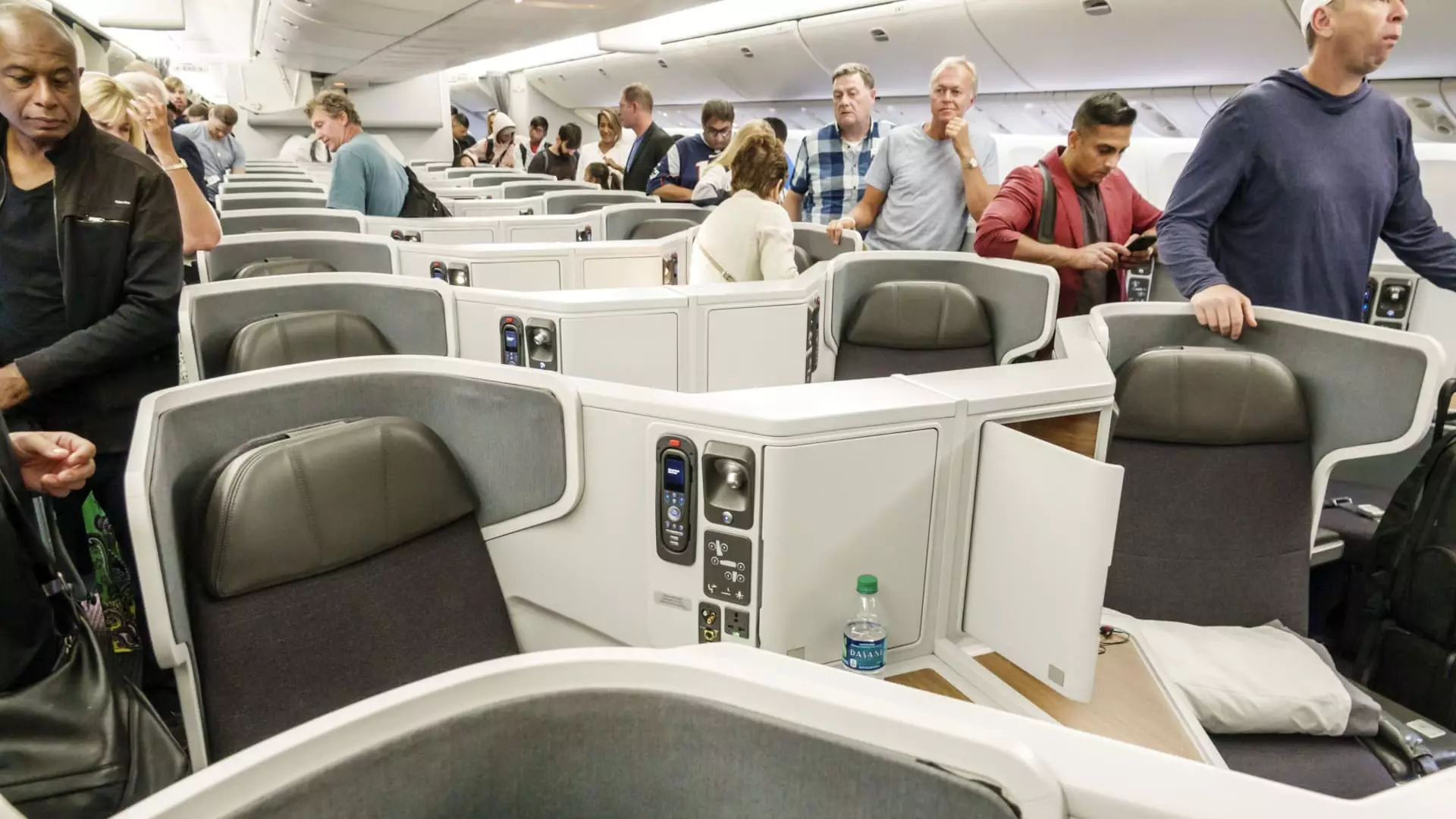The pandemic has sparked a significant shift in airline passenger preferences, particularly concerning seating arrangements. With a noticeable appetite for enhanced experiences, travelers are increasingly willing to part with their dollars for more comfort, specifically in the front of the aircraft. This shift indicates a market evolution where the traditional price-sensitive segment is adapting, highlighting the growing value placed on premium experiences. As a result, airlines are witnessing their previously sparse premium cabins fill up with customers eager to secure elbow room and quality service amidst unprecedented demand.
In fact, the continuing rise in passengers seeking premium upgrades has led to an overcrowding of frequent flyer elite ranks, making the prospect of complimentary upgrades more elusive. According to industry forecasts, travelers will encounter even more crowded flights, particularly during peak travel seasons like the holidays. Airlines are bracing themselves for a record number of travelers, with the forecasted demand extending into early 2025. This surge in travel interest underscores a robust consumer trend resilience, with occupation rates remaining high even in what were traditionally considered off-peak periods.
Faced with evolving consumer dynamics, airlines are not merely adapting; they are evolving their operational strategies to leverage this trend for increased profitability. The journey toward this transformation has been underscored by a steady shift toward revenue optimization through ticket pricing strategies across different cabin classes. For instance, the price disparity between standard economy and premium cabins has become glaringly evident, raising the question of value versus cost for many travelers. The stark contrast between a round-trip economy ticket and a business-class equivalent illustrates how airlines capitalize on this burgeoning demand for comfort.
Evidently, premium cabins now account for a considerable share of revenues, prompting airlines to reconfigure their loyalty programs. Airlines have begun rewarding spending over mere distance flown, recalibrating their elite status requirements in response to passenger preferences for versatility and value. This adaptability highlights a crucial balancing act for airlines: simultaneously fostering customer loyalty while maximizing revenue. As travelers are prepared to spend more on upgraded experiences, management teams are finding themselves in a competitive race to enhance premium offerings.
As airlines adjust to these market shifts, there is a noticeable trend of retrofitting aircraft to accommodate more luxurious seating options. The drive to capitalize on lucrative premium cabin revenue has incited carriers like American Airlines and Delta to rethink traditional seating arrangements. Both airlines have committed to increasing the visibility of their premium products while facilitating easier upgrade pathways for customers. Innovations, such as business class configurations featuring larger screens and enhanced privacy through door enclosures, signal the importance of an elevated in-flight experience to today’s discerning travelers.
Moreover, this trend is not isolated to major carriers; even low-cost airlines are stepping up their game. For example, Frontier Airlines plans to introduce roomier first-class seats, demonstrating the industry’s broader recognition of the necessity for enhanced travel experiences. The diverse approaches by various airlines—ranging from more premium seating arrangements to complete overhauls of existing configurations—illustrate an industry-wide commitment to attracting customers willing to invest in comfort.
The evolution of passenger preferences reflects a broader generational shift in consumer value systems. Today’s travelers, particularly younger generations, are more inclined than ever to allocate a larger share of their budgets toward premium experiences, and the airline industry is keen on capitalizing on this desirable mindset. As we move further into this new era of travel, the willingness to embrace comfort over cost opens up numerous opportunities for airlines to reimagine their services.
Southwest Airlines presents an intriguing case study with its decision to introduce extra-legroom seating while maintaining its traditional coaching structure. CEO Bob Jordan’s acknowledgement of a “generational shift” illustrates that airlines are attuned to the changing desires of their customer base, making adjustments that reflect the preferences for enhanced experiences without sacrificing too much on the number of available seats. This mindset demonstrates a cognizance of the need for a delicate equilibrium between accommodating customer preferences and maintaining operational capacity.
The airline industry stands at a crossroads, shaped by post-pandemic demand shifts that favor comfort and premium experiences. As airlines adapt to increasing consumer expectations, the emphasis on premium cabin enhancements highlights a crucial transition in air travel dynamics. With frequent flyers experiencing intensified competition for coveted seats, carriers are finding innovative pathways to blend profitability with an exceptional travel experience.
As we look to the future, this evolutionary phase offers valuable insights into how consumer demand will dictate the trajectory of air travel, urging airlines to continue innovating and evolving. In this way, the skies can remain welcoming spaces where comfort and competition coexist in harmony, ultimately enhancing the travel experience for all passengers.


Leave a Reply